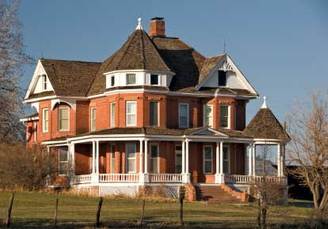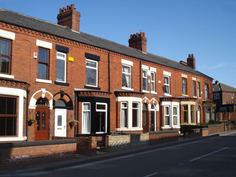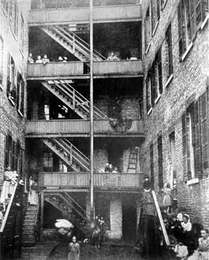The Country Estate
As England went through the Industrial Revolution, houses in the area began to change; they became a symbol of wealth.
The Victorian House
- Usually made of red brick and wood.
- Designed from a basic pattern book so that the homeowner could be creative and add personal preference.
- Roofs often contained steep roofs with may angles, stonework, iron railings, and fancy shingles.
- Interiors were decorated with rich, dark, patterned colors.
- Carpets and rugs decorated sitting areas.
- Houses had running water and gas lighting.
- Country Estates were often paired with a residence in the city, and often served as getaways.
Discussion:
- How can we compare these housing styles to those of today in America?
- Houses certainly still act as status symbols in today's society. Do you think that we let houses define us more today than they did in the Victorian Era? Are there newer objects and technologies in today's society that take the place of houses when it comes to status definition?



